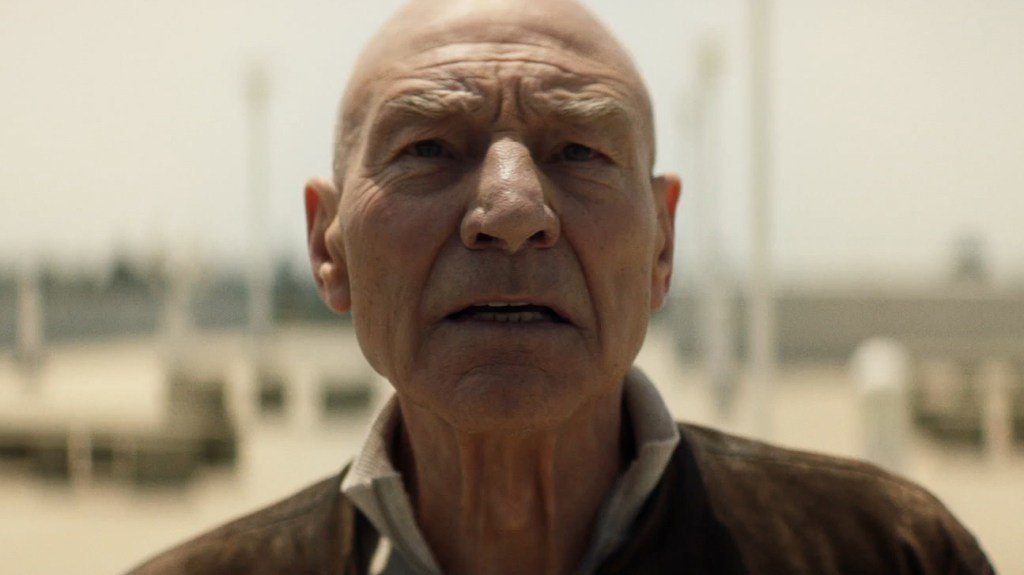Star Trek: Picard finally got its big reveal over the weekend, and after that warm, alcoholic feeling of nostalgia wore off I realized how disappointed I am over where the series seems to be going. The Next Generation is my favorite Star Trek series, and I was looking forward to Picard perhaps capturing that same vibe of exploration and adventure and dealing with situations with complex morality and deep, but procedural storytelling.
Instead, it looks like we’re going to get another action-packed, arcing story. Like Discovery, everyone seems to be lying, hiding some emotionally scarring secret, and are generally broody. We didn’t get much from the trailer in the way of hard details, but it’s enough to show that Star Trek: Picard is likely a far cry from its idealistic, uplifting roots.
In a world full of grimdark sci-fi, I had hoped that at least one of the roughly 300 Star Trek series in production right now would actually follow the cues that made The Next Generation so successful. Instead, there are numerous reasons to worry about why this series is about to wring whatever nostalgia juice TNG-era Trek has to offer and then throw its legacy in the garbage like a discarded orange peel. Fortunately for all you readers, I’ve compiled these reasons, no matter how petty, so you too can weep for the future of Star Trek.
As an aside, I’m a huge Star Trek fan and have been since 1994. I caught the last season and a half or so of TNG when it was new, and have watched (almost) every episode and feature film made before and since. I want Star Trek: Picard to be good, and you can take what’s below as my doomsday scenario. In all fairness, it will likely be fun to watch at the very least. Patrick Stewart and other actors from past series being involved give it a much higher chance of successfully capturing the essence of Trek than I am giving it credit for. But, it’s fun to gloom and doom sometimes.
Star Trek (2009) and Star Trek: Nemesis are canon and Star Trek: Picard is full of Romulans

[Image Source: CBS All Access]
Now, that wouldn’t be a big problem, except the events of those movies are borderline nonsensical. In Nemesis, a clone of Picard kills the Romulan Senate, telepathically molests Troi and then dies aboard a mega-powerful ship he and a race of vampire slaves built on Remus without anyone noticing even though the capital (and most defended point) of the Romulan Star Empire is right next to it. Also, Data needlessly dies, but that’s another issue altogether.
In Star Trek (2009), Romulus is blown up by a physics-defying “supernova,” (which are a real phenomenon and are immensely destructive, but don’t work like what’s shown in the movie at all). This is all so alternate Kirk and Spock can fight Romulan Captain Ahab who hates Old Spock even though he risked his life to try and save Romulus.

[Image Source: CBS All Access/YouTube]
Again, not a big deal normally, Romulans could use more screen time in the franchise, and at least it’s not a bunch of Klingons with the Discovery design. But, in this case, we’re going to get this whole big plot with Picard being depressed about Romulus exploding, possibly stuff happening with Vulcan-Romulan unification, and the Romulan Star Empire and Romulan Republic at each other’s throats and it’s all mostly based off of a throwaway plot device to get the ball rolling in Star Trek (2009).
There’s too much action already.
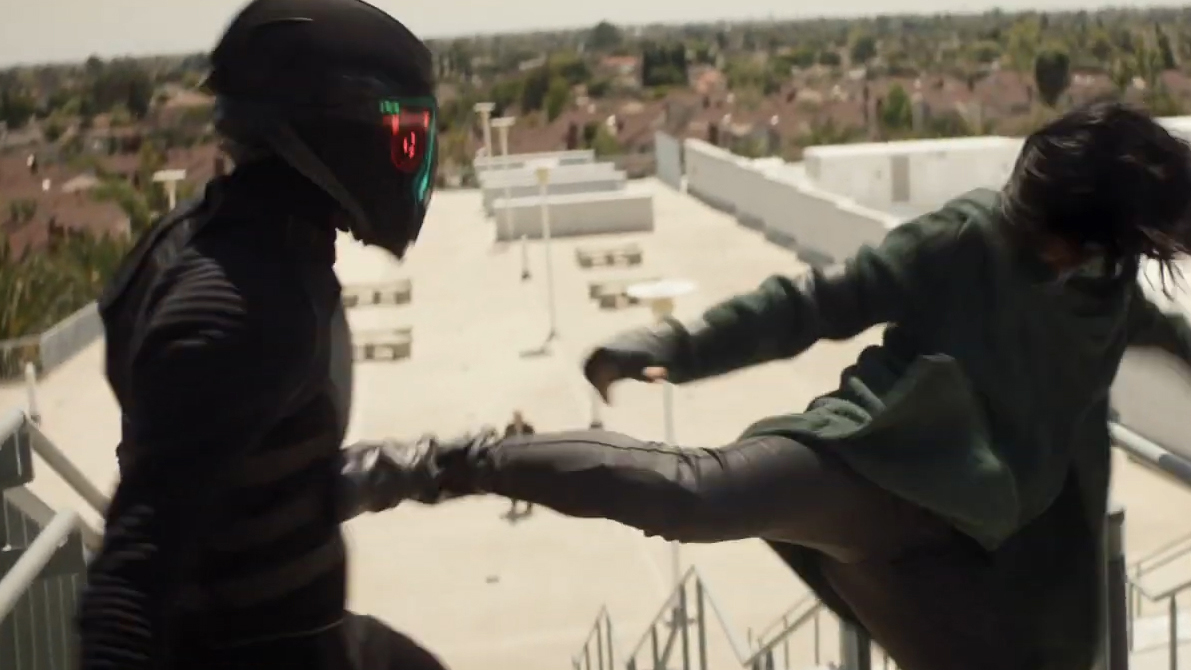
[Image Source: CBS All Access/YouTube]
Star Trek isn’t an action series. Pre-Discovery, on the TV shows even when things get really hairy, the most you get is a short, cheesy fistfight, or someone will dodge around a little bit and fire a phaser. Maybe you’d have a ship fire a torpedo or discharge the ol’ phaser banks two or three times. That’s about it. Short and sweet. It’s because before everything became one big serialized mess, you just had 45-50 minutes to tell a story from start to finish and make sure everything was reset for the next episode. Even DS9, the most serialized Star Trek before Discovery, would blend the main arc into procedural episodes. So, Sisko and crew might be fighting the Dominion, but any particular episode is fairly self-contained. Now, you can spend half an episode on a fight that does nothing to further the storyline because you can just spend the entire next one talking in one room about some asinine thing.
Too much action ruins the pacing of a show, and with Dahj’s fight with the masked guys, I can already see it coming. Also, Picard is old, so just like in the trailer, he’ll be sitting on the sidelines looking like someone’s worried grandpa. He gets to shoot a disruptor in the trailer, but that’s part of the problem. Picard isn’t an action dude. He’s a thinking man who really weighs the morality of using force. Unfortunately, this series will likely have the same errant killing and unneeded violence that every other sci-fi series since the Battlestar Galactica reboot has had.
The Borg are back, again.

[Image Source: CBS All Access/YouTube]
When the Borg went from being a collective, only driven by assimilating new species and technology in their quest for perfection, to being ruled by a queen, the whole concept fell apart. The scary thing about the Borg was that they had no head to chop off. Even Jean-Luc’s transformation into Locutus was just because the Borg thought having a spokesman would make the process of Earth’s surrender and assimilation quick and efficient. Once the concept of the Borg as a hive instead of a collective took root, they seemed a lot more vulnerable. The queens we saw in First Contact and Voyager were petty and vain, and when they died, they took a good chunk of their underlings with them.
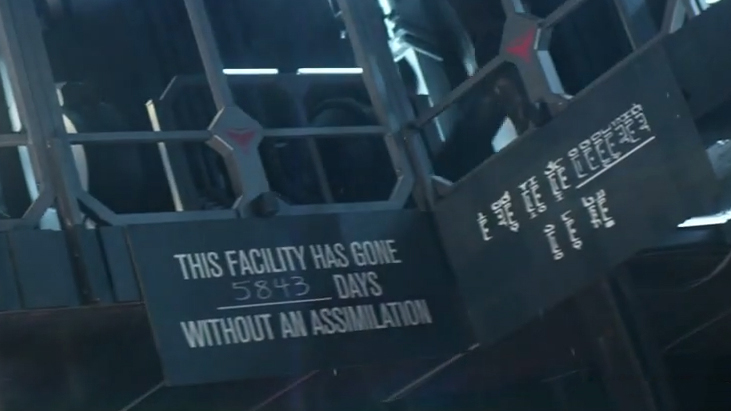
[Image Source: CBS All Access/YouTube]
We also see footage of Hugh, the drone from the TNG episode “I, Borg” having his implants surgically removed in what appears to a Romulan facility. We already know that the Tal Shiar has experimented with Borg technology, as Nero’s Narada in Star Trek (2009) is the result of Borg enhancement stolen from one of its depots. So, it looks like in part, Star Trek: Picard is going to be some sort of pseudo-sequel to Star Trek (2009) and the Star Trek: Countdown comic series.
Honestly, out of everything in the Trek universe they could have tapped for this series, I’m not sure why they went with the Borg. Being assimilated was a big part of Jean-Luc Picard’s life, sure, but the Borg are played out. Again, this would have been fine in an episodic show, but since Picard is meant to have some big arcing plot, we know that at least the first season is going to deal heavily with whatever the Romulans are doing with these derelict Borg. More than likely, Dahj is going to be some sort of unique Borg, probably a queen, and the Romulans need her to regenerate and control the cube they’ve captured so they can do nefarious stuff. It’s predictable, and I really hope there’s something bigger behind it than that.
Picard won’t be a Federation officer and Starfleet won’t be helping him.

[Image Source: CBS All Access/YouTube]
I’d argue that Picard is so duty-bound that nothing would affect his dedication to Starfleet and the ideals of the Federation — and we’re talking about TV series Picard here, movie Picard is basically a different character. He’s a bigger picture kind of person and almost universally has shown a professional detachment when confronted with ambiguous situations despite any personal feelings he may have. The destruction of a star system, especially one of a major galactic power, would be an almost unparalleled disaster in the Trek universe. However, from what we know of Picard, I can’t think of anything that would shake him so bad he’d leave Starfleet. I could see him retiring someday to become a professor at Starfleet Academy, or slipping into an ambassadorship, but if any Trek captain is a lifer, it’s Picard.
So, let’s entertain that Picard quit Starfleet. He’s curmugeoning around his vineyard, and Dahj asks him for help, probably because she used to be Borg and he used to be Borg. He needs a ship, so he heads to Starfleet Headquarters, and from the trailer, it looks like he talks to an admiral of some stature. Her rank insignia seems to be five pips, which means she’s probably a fleet admiral and likely holds a very high position, perhaps even Commander, Starfleet. So, what is possibly the highest-ranking officer in Starfleet meets with Picard, and he says, “I’ve encountered a woman, she came to me for help. If she is who I think she is, she’s in serious danger.” Later on, we see Picard on a ship that doesn’t match any known design we’ve seen in Trek history with a group of what appears to be civilians.
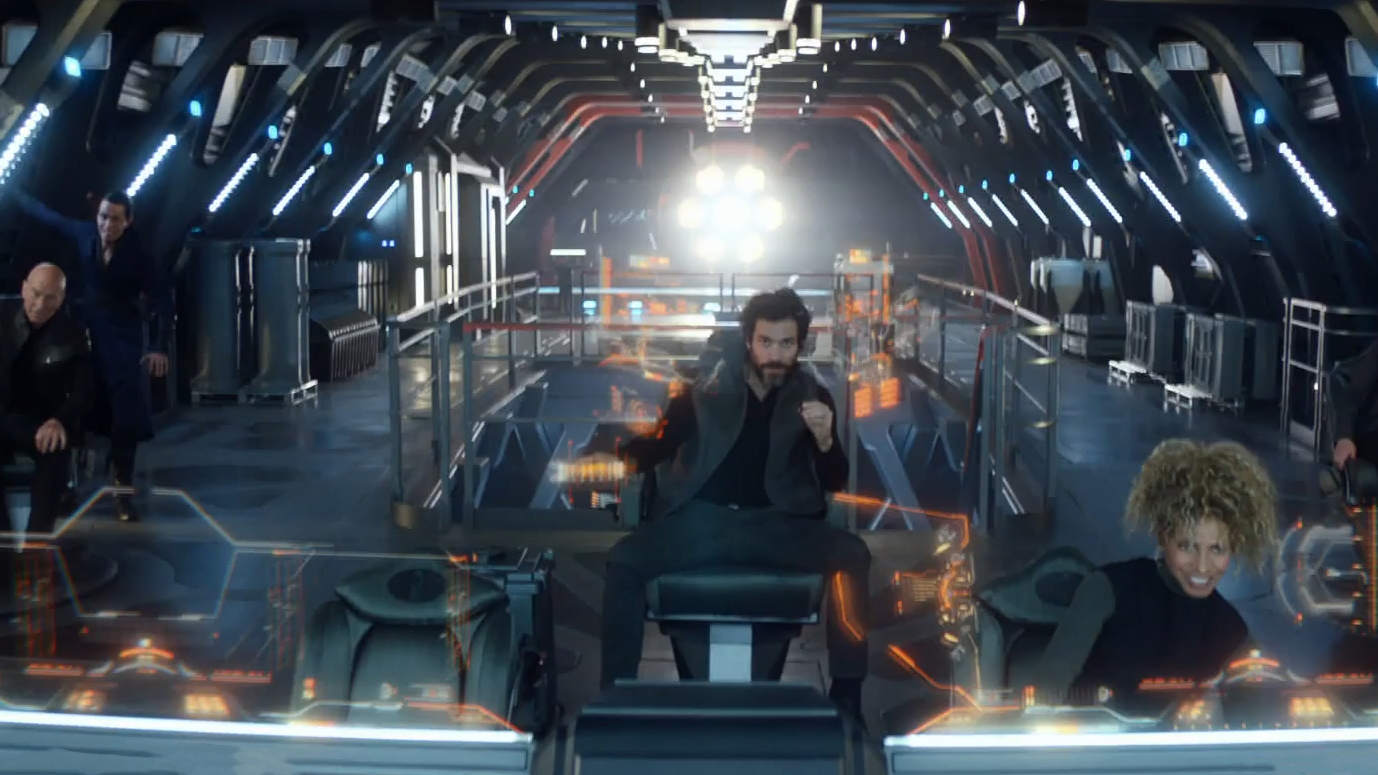
[Image Source: CBS All Access/YouTube]
Seeing as Picard has saved the Federation from the Borg at least twice, it seems odd that he wouldn’t receive assistance from them. You’d think as soon as he was like, “This girl is a secret Borg queen or something, and that creepy ole Tal Shiar is after her,” they’d reactivate his commission and give him a whole fleet. Of course, there wouldn’t be much tension if they were like, “Oh, wow. Here’s a new uniform and we’ll just recommission you as an admiral, and you can take care of business. We trust you know what you’re doing since you’re Jean-Luc Picard, one of the greatest heroes the Federation has ever known.”
Alternatively, even if the admiral didn’t really trust Picard or want to give him any resources — maybe she’s Katherine Pulaski’s sister or something — you’d think she’d lock Dahj up right away. I mean if someone is running around saying they’re a Borg queen or an android or whatever is going on with her, and Jean-Luc Picard is backing them up, you might wanna check their story before you get some egg on your face. At the very least, she probably broke some laws crossing from the prison cube in Romulan space to Earth. Might wanna check her ID or something.
Oh geez, gotta save the universe again.
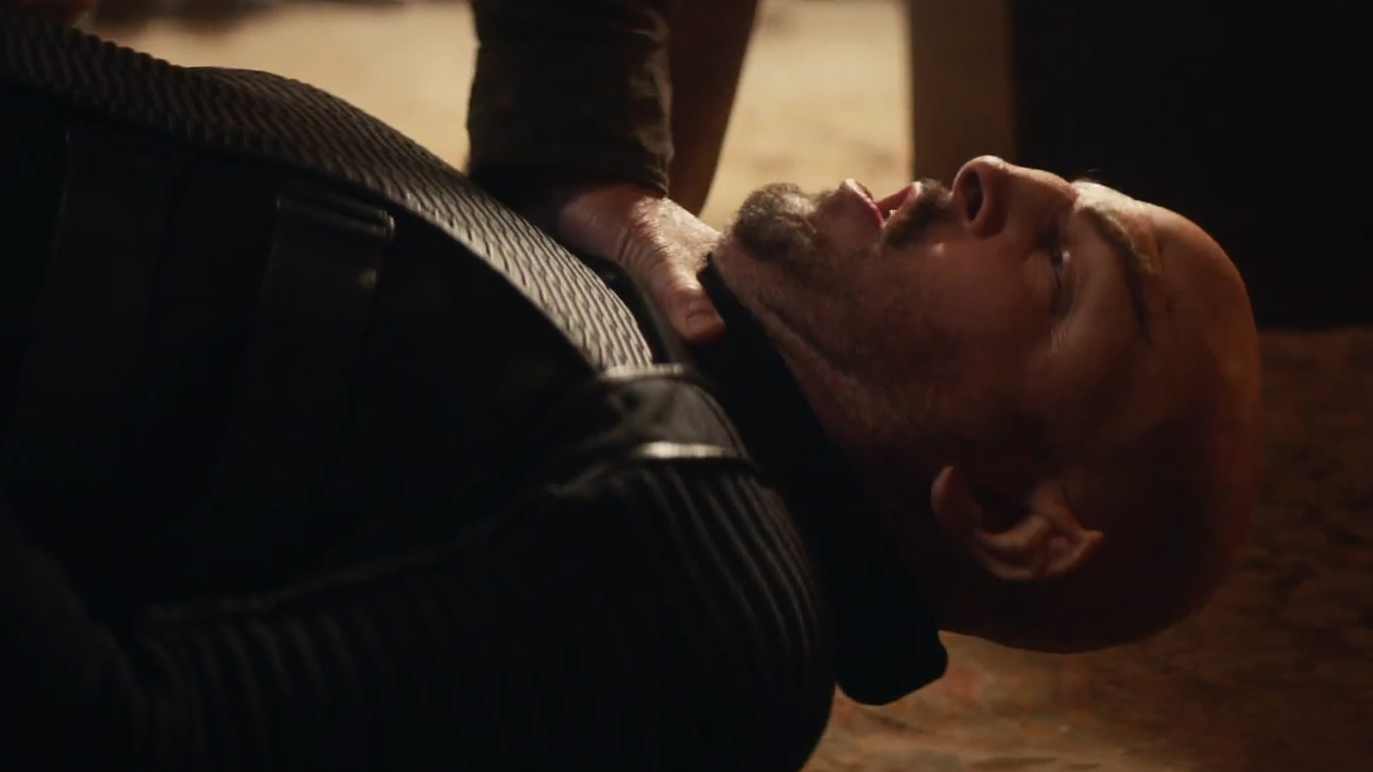
[Image Source: CBS All Access/YouTube]
What I really like about Star Trek: The Next Generation is that all life in the galaxy doesn’t need to be threatened for things to be interesting. Let’s take “Journey’s End” for example. I’m just pulling this one out of a hat, this is an average episode of TNG, albeit one that gives some interesting details about the Federation’s relationship with the Cardassians.
In “Journey’s End,” the Enterprise-D is part of a task force that is relocating Federation colonists from worlds that are being handed over to the Cardassians as a part of a treaty. When the Enterprise-D arrives at one of the colonies marked to be turned over, Dorvan V, the inhabitants state that they don’t want to leave. The colonists are Native Americans who practice the traditions of their tribe, and Dorvan V has become interwoven with their religious beliefs. Because of this, they insist that a substitute planet won’t do.
The situation is made more difficult by the fact that a brooding Wesley Crusher is visiting the Enterprise-D on leave from Starfleet Academy. Upon visiting the colony, Wesley meets with an Indian shaman who encourages him to meditate on his troubles and attempt to go on a vision quest. Since he’s still feeling pretty bad over having to repeat his senior year after lying about his friend dying — which is admittedly pretty heavy — he takes the shaman’s advice and finds he doesn’t want to remain in Starfleet.
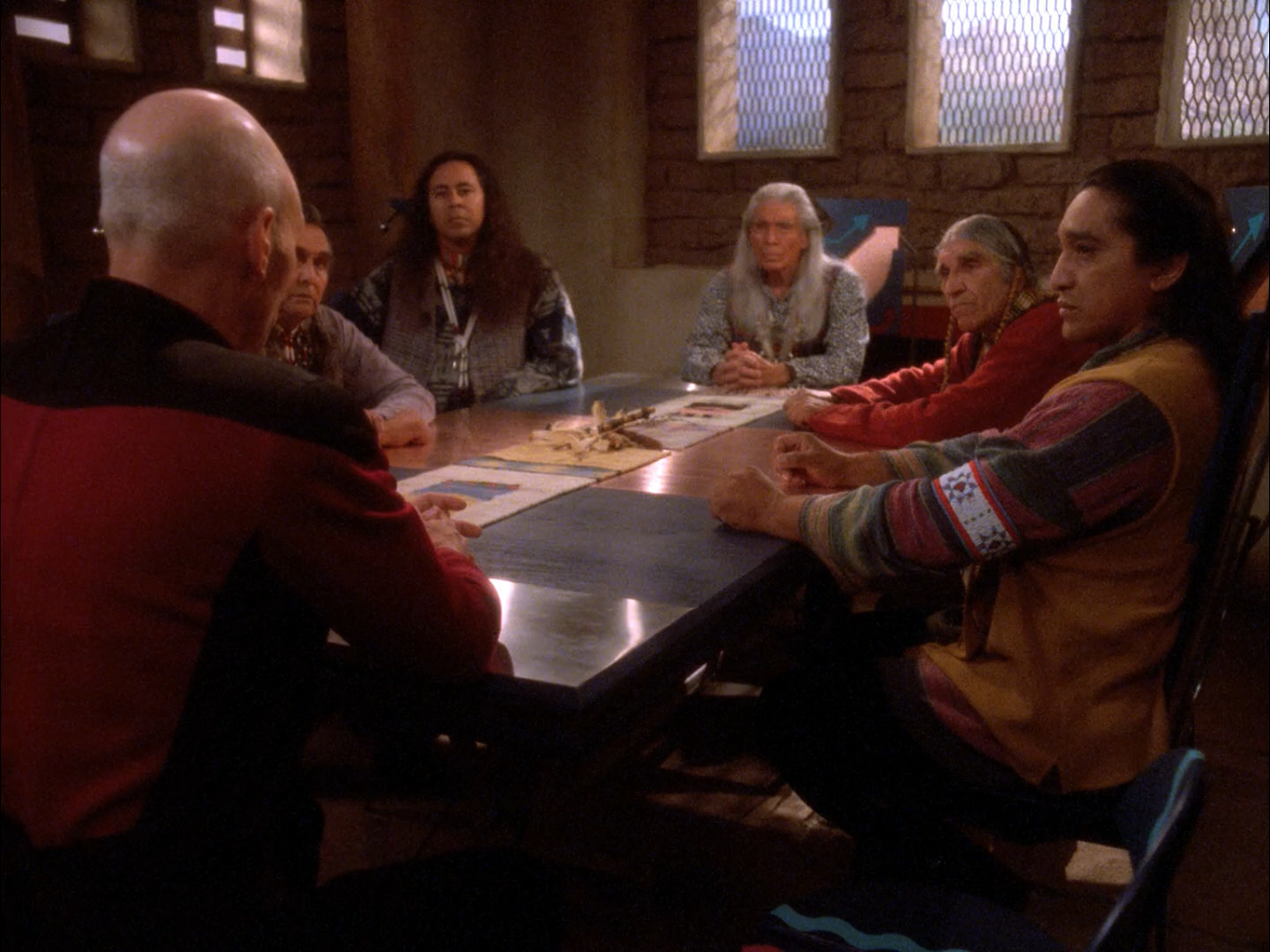
[Image Source: CBS All Access]
Wesley ends up quitting Starfleet, and the Gul agrees to allow the Native American colonists to become subjects of the Cardassian Union and stay on the planet if they renounce their Federation citizenship. “Journey’s End” also marks the beginning of Wesley’s adventures with The Traveler.
Despite the tension and drama in just this average episode of TNG, the galaxy wasn’t at stake. In fact, the colonists weren’t ever really in danger. However, this adventure on a backwater colony on the edge of Federation space drew me in more than anything Discovery had to offer. I’m tired of Red Angels and cookie-cutter action schlock. “Journey’s End” was good in part because it was morally complex. The allure is that none of the answers presented in the episode were right or wrong. The colonists had the right to resist the perceived invasion of their planet, Picard was duty-bound to follow orders to remove them by any means necessary, and the Cardassian Gul is just there to claim a world that the Federation supposedly transferred to his government with no strings attached. That’s life right there, and seeing how these characters deal with it peacefully, though not without hiccups, and come to a solution that works for everyone is inspiring.
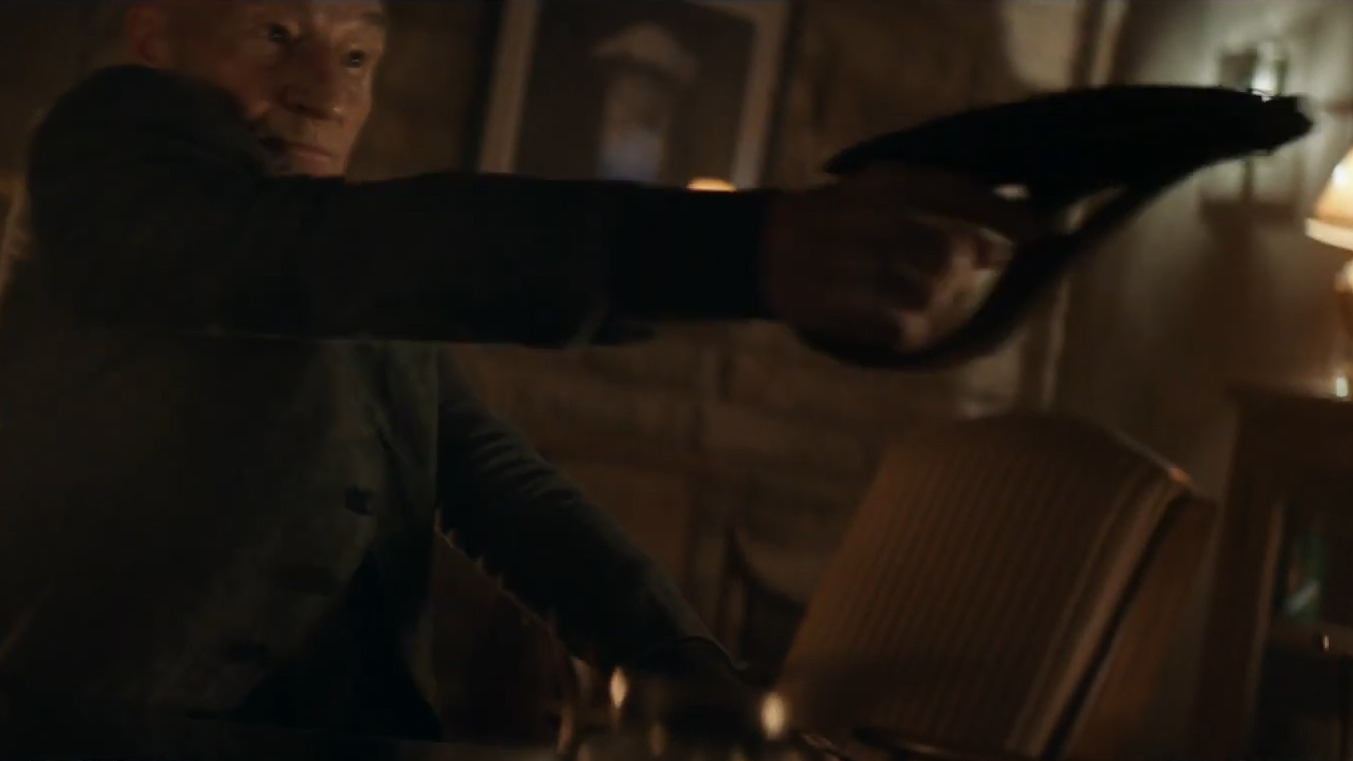
[Image Source: CBS All Access/YouTube]
It ignores the original utopian idea of Star Trek.
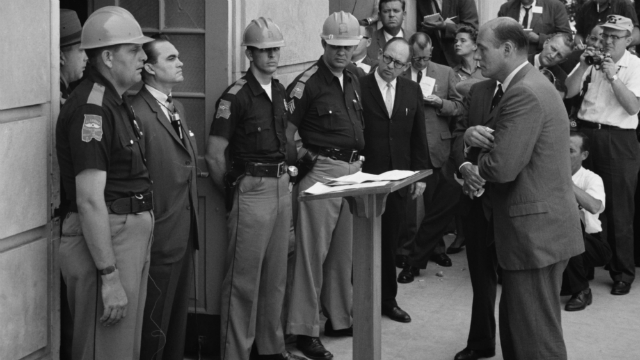
[Image Source: Warren K. Leffler/U.S. News & World Report Magazine]
The thing is, the world was objectively in a worse place when TOS and TNG premiered. Minorities were actually getting lynched, and segregation was in force when Kirk and Spock were on their first five-year mission. During TNG, the AIDS epidemic was in full swing, and the USSR was collapsing. People were living in uncertain times, and the geopolitical landscape was undergoing a complete restructuring. Today, we have a President who talks on Twitter too much, the same issues with the southern border we’ve had for decades, and tension with Russia that doesn’t approach the level that it was during the Cold War. I guarantee you that the world is no more racist than it was in 1966 when TOS premiered, and Russia is not less stable than when the wall fell during TNG. Oh, yeah, and gay marriage was illegal when both series were on the air, not to speak of the absolute absence of discussion of anything associated with trans rights or really any LGBTQ+ issues.
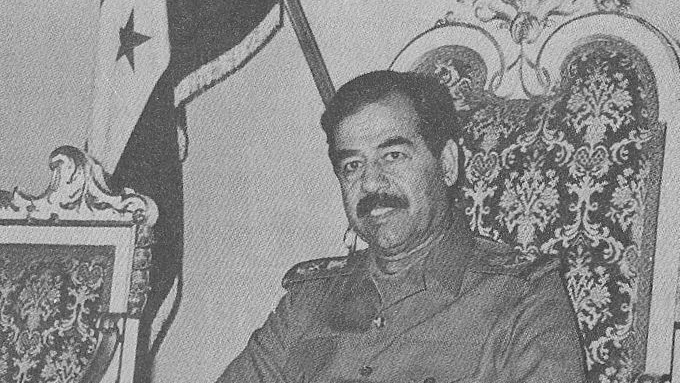
[Image Source: Iraqi News Agency]
The biggest irony in all this is that if Star Trek: Picard took cues from TNG and presented a well-lit, inviting script, steady camera work, and an optimistic outlook, it’d be the only show (besides The Orville) with that aesthetic being produced. However, that’d mean taking a risk. If you don’t get old man Picard out there shooting people with a crew of scrappy misfits, you might have too much nuance. Too much nuance is why Star Trek: The Next Generation wasn’t one of the most successful syndicated sci-fi shows of all time. Oh, wait a minute…
I hope I’m wrong.
I’m not really looking forward to lens flare, dutch angles, and paper-thin plots filled with cliched characters and hammy action. If this series takes any cues from Discovery, and I strongly feel like it will, then I don’t have a lot of hope for it. Discovery had the good graces to at least propel itself 900 years into the future for the rest of the show, but the damage it did to the TOS era is incredible. I suspect we’ll see something similar with Picard. Retcons for the sake of retcons; underutilized, one-dimensional characters; and a dull, nonsensical plot.
I’ll watch Star Trek: Picard, and I’ll keep an open mind. I want to love this series, and I want to love Discovery. However, since Enterprise was canceled, CBS and Paramount are making my relationship with Star Trek feel more like Stockholm Syndrome. With each new iteration, my expectations get beat down, and I’m internally in the fetal position crying and trying to find reasons to love the thing that’s hurting me so bad.
That’s probably a bit over-the-top, but the comparison stands. Star Trek set itself apart from its peers because it’s not space opera, it’s pure, idealistic sci-fi. Despite how bleak things looked in TOS, TNG, DS9, VOY, or ENT, the crews kept the ideals of the Federation alive and always tried to do the right thing. When that right thing wasn’t obvious, they fought to figure it out together. Starting with Discovery, that’s all gone, and I don’t see Star Trek: Picard pulling a 180 in tone and bringing that magic back.
